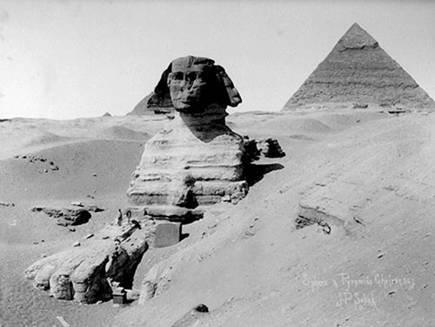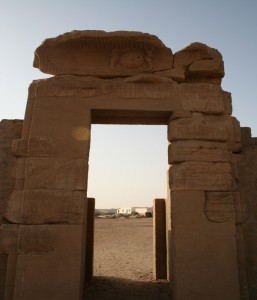I’ve been to Egypt twice. As the tour leader and guide, I was in a different headspace. On the last trip, in 2010, we ventured to the western Oasis and a place least visited by tourists. It’s untouched by commercialism, with one hotel and no independent restaurants.
Traveling along with us was a female Egyptian guide and two Egyptian drivers in a white bus, luggage on the top, we drove west on a desolate road. The landscape is flat, and I could see miles of sand and nothing else but memories that darted in and out of my consciousness.
Upon arriving in Kharga, the western oasis, an armed guard boarded the bus and traveled until we reached the hotel. Populated with a few curious tourists in four-wheel jeeps, we were the only group of western women at the hotel. After checking in, we re-boarded the bus and drove around the area, looking for something to dig up.
From the hotel, on a hill, we could see the edges of a temple fort, a half-excavated structure, and as the sunset hit the mud walls, more memory started to percolate up, and I felt transported back in time. I felt like a kid in a candy store standing directly on history. It wasn’t only me who felt the rumbling energy underfoot; others in the group did too. Were we all in Egypt together at one time?
The Egypt we know remains buried under the sand. We stopped at any temples dotting the sandy landscape. In the middle of nowhere, with wide-open dunes, with no trace of anything remotely familiar, only to tap into the energy. At the temple on the hill, a dormant half-excavated archaeology dig left abandoned, I pushed open the door and walked into sand-filled rooms. We stood on top of mounds of sand and felt a great desire to dig. When the pyramids were discovered in the early 1800s, they dug them out.
During my first trip, we followed a more traditional route and sailed the Nile on a big cruise ship, along with two thousand other people. It wasn’t exactly what I thought Egypt was about.
Egypt Spiritual tour
The third trip, I don’t want to let out all the surprises just yet; we don’t move around as much and stay in two hotels; in the past, we changed hotels frequently.
One of the things I said last time I was in Egypt is that the real Egypt is still operating on a different dimension and a bit more west from the location of the Nile. On Instagram, I’m following a man who teaches hieroglyphics. It’s so fascinating to learn what symbols mean. He also posted pictures from the 1800s when the Europeans came to Egypt, and my first impression was, “Look what they did to my home.”
New digs are being discovered more frequently, and recently at Saqqara, a 4,400-year-old tomb belonging to the Pharaonic period and decorated with hieroglyphs and statues was unearthed in the western Egyptian city of Giza. An exceptionally well-preserved tomb was from the rule of Neferirkare Kakai, the third king of the Fifth Dynasty of the Old Kingdom (circa 2,400 B.C.). The tomb belonged to “Wahtye” does that feel like you? A royal priest along with his mother, wife, and family.
The Fifth Dynasty ruled Egypt from about 2,500 BC to 2,350 BC, not long after the great pyramid of Giza was built. The color is almost intact even though the tomb is nearly 4,400 years old. Saqqara served as the necropolis for Memphis, the capital of ancient Egypt, for more than two millennia.
Come to Egypt in September and create your own special memories. Plus, connect with a like-minded group of people who you might have known in Egypt at a different time.
